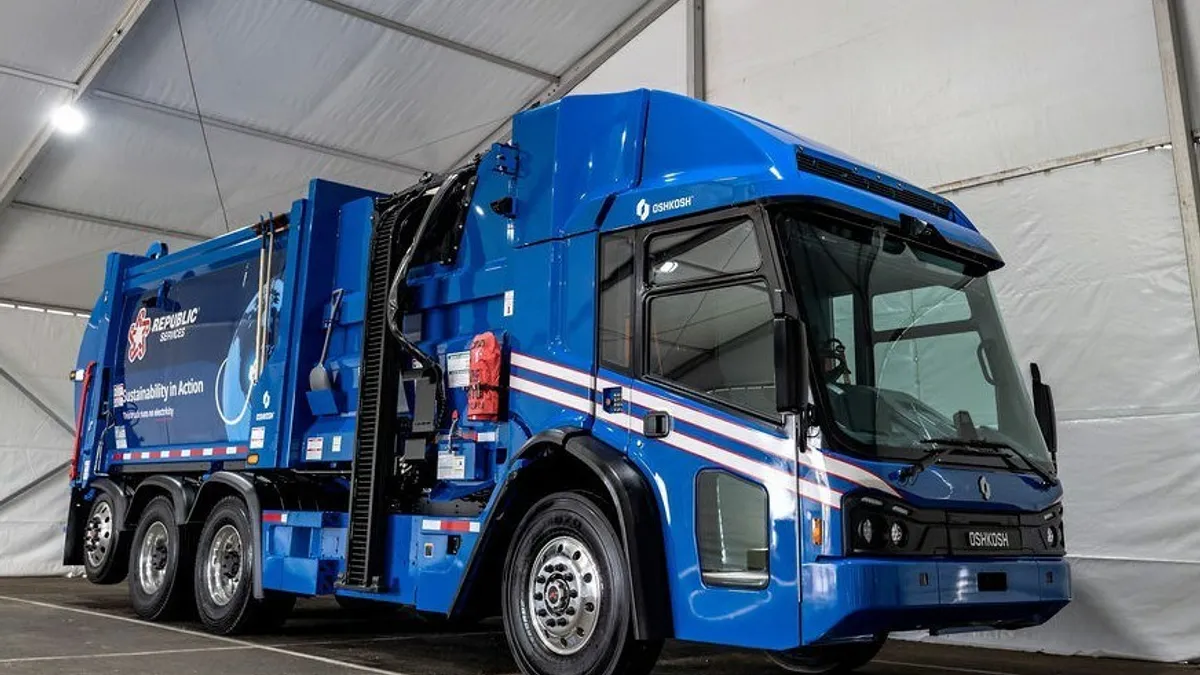A takeout coffee cup can be a lot of things: a status symbol to show you go to the "right" coffee shop; an annoyance if the insulating sleeve is missing; a mere convenience. But they and cups for cold takeout drinks are also a waste problem.
At least 250 billion of these cups are distributed globally every year, with many getting disposed, although some are recyclable.
Turning cups into something other than landfill fodder has taken on a new urgency, as consumers become more concerned about sustainability, and demand booms for fibers needed to make things like corrugated cardboard boxes used for online shopping.
"The cup itself is often made of mostly virgin fiber, and many of that is considered really good quality fiber to then go into the recycling stream," said Nina Goodrich, director of the Sustainable Packaging Coalition and executive director at GreenBlue. That fiber is valuable because "it brings those much needed long fibers into the mix."
But getting it is the challenge.
The polyethylene lining on most cups make them difficult for mills to recycle. And inconsistencies with recycling collection and infrastructure mean that even the cups that can be recycled by mills (with the technology to do so) end up in the trash anyway.
"I’m a big fan of compostable packaging, but we have to continue to build our infrastructure to recycle [cups]," Goodrich said.
Building better cups and recycling systems
The solution to reducing overall waste and creating more recyclable cups is a multi-pronged challenge.
In 2018, the NextGen Consortium launched the NextGen Cup Challenge to "identify and commercialize existing and future solutions for the single-use, hot and cold fiber cup system," Dan Liswood, senior project director at Closed Loop Partners, wrote in an email.
That includes replacing polyethylene liners (they prevent leaks but are less recyclable than other paper products), testing new plant-based materials, and creating reusable cup service models "that harness technology and design to keep valuable cups in circulation," he wrote.
"I’m a big fan of compostable packaging, but we have to continue to build our infrastructure to recycle."

Nina Goodrich
Executive Director of GreenBlue
CupClub, for example, which is part of the NextGen Consortium Circular Business Accelerator, is a U.K.-based company that operates a returnable cup ecosystem, like bike-sharing but for cups. This setup allows for would-be discarded cups to stay in use, cutting down on waste.
The NextGen Consortium is also working on fixing inconsistencies with recycling collection and infrastructure so cups that can be recycled are, and to let users know that the cups are actually recyclable.
NextGen, along with the Foodservice Packing Institute, is also pushing innovation at mills so they can recycle cups with polyethylene liners. Right now, 30 mills in the U.S. and Canada can do so, including those belonging to major players WestRock and Georgia-Pacific.
"A large portion of paper-based foodservice packages are discarded in the U.S. each year as, historically, this packaging has not been widely accepted in recycling programs," Patrick Lindner, president of consumer packaging at WestRock, told the Sustainable Packaging Coalition in 2019 when the company was given an SPC Innovator Award.
"WestRock’s acceptance of foodservice packaging at its mills — as well as our research and development work on new, more recyclable and compostable packaging designs — exemplifies our commitment to finding ways to make packaging more sustainable," he said.
'Exacerbated and exposed' by the pandemic
The pandemic temporarily sidelined the use of reusable cups because of uncertainty about how the virus was transmitted, Liswood said. But he also recognized that the pandemic "exacerbated and exposed the already growing piles of waste" due to food waste and takeout food packaging.
"This not only brought the global waste challenge to the fore, but also laid the groundwork for reuse solutions, underscoring the need and strong business case for resource efficiency," Liswood said.
Demand for global recovered paper is also on the rise and will continue to grow through 2025, according to Fastmarkets RISI.
Megan Workman, Fastmarkets RISI's price reporter and editor, said in April that the rise is largely due to China banning the imports of recovered paper starting this year. Companies in China are instead turning to brown recycled pulp.
That, in turn, has driven up the price of recycled paper. This is happening at the same time as an "explosion of people" move from plastic to paper, driving up demand for paper and recycled content, Goodrich said.
The effect is that virgin fibers in polyethylene-coated cups are all the more valuable. So, too, is the importance of an entire recycling system. From a consumer grabbing that coffee cup to knowing to put it in a recycling rather than trash container, to recycling streams processing it, to that cup ending up at a mill that can recycle it.
"It’s just paper, and most U.S. mills can handle it. That’s a huge change from 2018," Workman added. "Would [mills] want a truckload of cups? I don’t think it’s as much of an issue as it was three years ago."






















